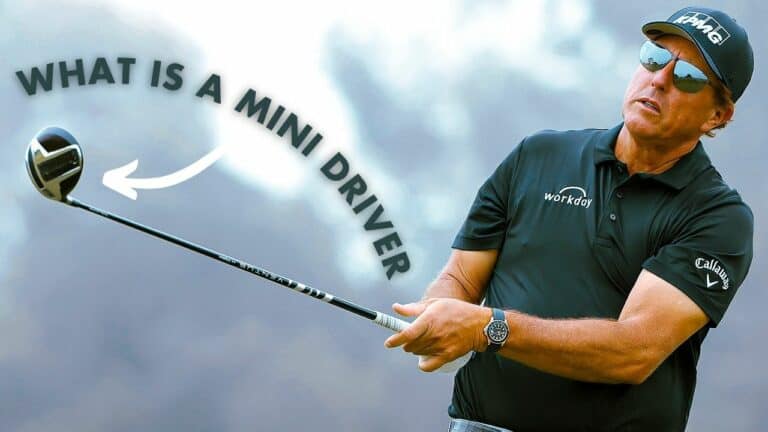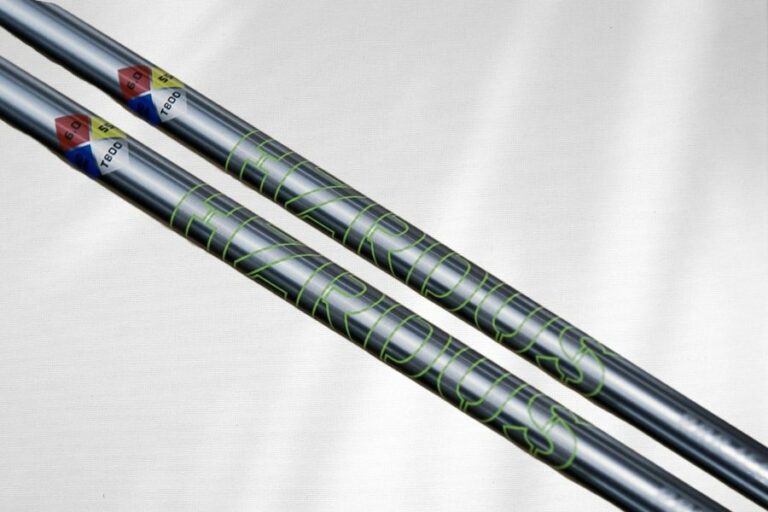Golf Terms – A Complete Guide

For a successful golf game, you must know what the golf terms are. This article explains the terms used in golf courses, format, shots, and scoring.
Golf is a game of skill, and like any other sport, it has its own specific language. From “birdie” to “mulligan,” there are many terms that you’ll hear on the green or even in the clubhouse. You may even hear some terms while watching a game of golf on television.
This article will provide an overview of some common golf terms.
Golf course terms
The first thing you notice in golf is the course, how many holes it has, and the different parts of the course. But, to know all this, you need to understand all the terms related to the course so that you stand out on the course.
1. Hole
It is an area where a cup is inserted into the ground to hit the ball. It can be described in two different ways: One that specifies the hole, particularly you are going to hit, or any of the 18 holes that are present on the course (from the tee box to the green). It is typically 4.25 inches in diameter, and it is located on the putting green.
2. Tees/Tee Box/Teeing Ground
The teeing ground is where each hole of golf begins. It’s also referred to as the tee, tee box, and “teeing ground.” The name comes from the object used to raise a golf ball before hitting it at the start of play. However, specifically a tee is a small stand that is used to support the golf ball before a shot is taken.
3. Fairway
It is the portion where the grass is cut the shortest (shorter mown) between the tee and green.
Note: The grass is shorter than the rough, and playing a shot from this area makes it quite easier.
4. Rough
It is the area that is next to the fairway, greens, tee-off area, or hazards and has the grass thicker and longer than the fairway.
5. First Cut
This is an area that is between the rough and fairway. It has grass longer than a fairway and shorter than rough.
6. Bunkers (Sand Traps)
Bunkers are sunken pits filled with sand that are specially prepared to test a player’s ability to play a ball from the sand. There are two types of bunker – the one that is located near the green called as “Greenside Bunker” and the other located along the fairway known as a “Fairway Bunker.” Moreover, a shot from the bunker is known as “Bunker Shot“.
7. Green
Also known as putting green is the area covered with a smooth grass at the end of the fairway. It is the place where the flag is located near the hole.
8. Fringe
It is the area located near the putting green where the grass is slightly higher than the green.
9. Flag/Pin/Flagstick
A flagstick is usually made of metal and is placed at the or inside the cup so golfers can easily locate the hole. You can even put a pin in the hole, remove the pin or have someone tend to the pin.
10. Hazard
Hazard is an area in golf that provides difficult obstacles that can be of two types: Natural hazards such as water bodies and Man-made such as a bunker.
11. Outbounds
It is the area of the golf course that the course staff or committee has marked to be out of play and is known as out of bounds.
12. Drop Zone
A “Drop Zone” or “Drop Area” is a special area where the committee allows or requires golfers to drop the ball if they cannot play their current ball due to an unplayable ball or other reasons.
13. Course Rating
This is calculated based on the effective playing length and obstacle factors. Moreover, it is expressed in strokes to one decimal point.
14. Slope Rating
This represents the difficulty of the course based on the scratch players who are not scratch players. Slope rating ranges from 55 to 155, with higher numbers indicating how difficult the course is.
15. Dogley
Dogley hole resembles the hind leg of a dog as this hole bends either left or right.
16. Yardage
The distance from the tee to the hole.
17. Break
This is the amount a ball moves or is expected to move either to the left to right or right to left of a straight line while putting on a green.
18. Grain
It refers to the way grass on the green is growing horizontally in one or more directions rather than vertically. Moreover, putting a shot in grain is difficult as it leads to break through.
19. Playing From the tips
This refers to a golfer playing from the rearmost set of tees or the maximum distance of the course.
20. Short-sided
In this case, the ball is positioned where the golfers have less green to work with relative to the hole.
21. Pitch Mark
This is an indentation that is caused by a golf ball hitting the ground.
22. Divot
Divot are the marks that are caused by golfers while their club’s face cuts through the grass.
23. Cart Path Only
This refers to the motorized golf carts to limit driving and to only move through the cart path only so to prevent the damaging, of course.
24. Links
Links refers to a type of course which is commonly located in an area where there is a lot of wind, few trees, and the soil tends to be sandy. Moreover, these are the oldest type of course.
Golf format
Many amateur players think that the only way to play is by stroke play, but many formats can be used to compete. A list of the most popular formats in golf have been listed below:
1. Stroke Play
In this type of play, a team of players or a player competes against each other for the total score in one round or multiple rounds of play.
2. Match Play
Match play is played directly against one another to make the best score on individual holes in a head-to-head match.
3. Skins
This Skins format is similar to match play. But this takes place between three to four players where they compete against each other for a prize on each hole.
4. Scramble
In Scramble format, a team of players plays one after one to hit their shots within one club length of the selected shot. However, this length is chosen by the captain of the team as the best shot from the first stroke.
5. Texas Scramble
This is the same as the scramble format but with some additional rules. This includes a team that is required to use at least four drives from each team member over the round of the course.
6. Shamble
In shamble, a team of golfers selects the best drive among them after teeing off, just like in a scramble. But, then all four play their own golf balls from that position into the hole.
7. Best Ball
This is also known as the “Four Ball” or “Better Ball,” which makes golf a team sport. In this, each team member plays their ball from the tee until they put it into the hole. Moreover, it is determined by the lowest individual score of the hole.
8. Alternate Shot
In this format, teams of two players alternate between each shot.
Types of golf shots
1. The Drive/ Tee shot
The drive is the most powerful shot in golf. It is hit from the teeing ground with the intention of getting the ball as far down the fairway as possible.
2. Approach Shot
The approach is a shot hit from the fairway towards the green. It is usually played with a long iron or a fairway wood. The main objective of the approach is to get the ball onto the green, close to the hole.
3. Chip Shot
The chip is a shot played from around the green. It is generally played with a short iron or a wedge. The main objective of the chip is to get the ball onto the green and close to the hole.
4. Putt
The putt is a shot played from on or around the green. The main objective of the putt is to get the ball into the hole.
5. Lay-Up
A lay-up is a shot played from the fairway that is designed to leave the ball short of a hazard such as a bunker or water. The main objective of the lay-up is to avoid the hazard and leave the ball in a position where an easy approach shot can be played.
6. Pitch Shot
The pitch is a shot played from around the green that is designed to get the ball onto the green and close to the hole.
7. Punch Shot
A punch shot is a low-trajectory shot played from around the green. It is generally played with a short iron or a wedge. The main objective of the punch shot is to get the ball onto the green and close to the hole.
8. Flop Shot
A flop shot is a high-trajectory shot played from around the green. It is generally played with a short iron or a wedge. The main objective of the flop shot is to get the ball onto the green and close to the hole.
Golf shot trajectory terms
1. Straight
A straight shot travels in a straight line with no right-to-left or left-to-right movement once it’s in flight.
2. Draw
A draw shot refers to the slight right-to-left ball flight for right-handed golfers when hitting the ball and vice versa for left-handed golfers.
3. Fade
This shot is also known as a cut shot. Fade is just opposite to the draw, as in this, the ball flight moves left-to-right for right-handed and vice versa for left-handed.
Read More: Draw Vs. Fade Shots
4. Push
A push shot means that the ball has its flight traveling right of the target and continues on a straight line for a miss to the right. Just reverse in the case of a left-handed golfer.
5. Pull
A pull shot is just the opposite of to push shot. It means the ball has its flight traveling left of the target and continues on a straight line for a miss to the left in the case of a right-handed golfer. Just reverse in the case of a left-handed golfer.
6. Slice
The slice shot is an undesirable shot that sharply curves to the right due to too much sidespin and backspin.
7. Hook
A hook is a reverse of a slice in golf which is an undesirable golf shot that sharply curves to the left because it has too much sidespin and backspin.
Read More: Golf Slice Vs. Hook
8. Push Slice
This shot is a combination of a pushed and sliced golf shot. The balls flight to the right of the target to travel in a straight line, but due to its more sidespin, it causes a curve and leads the ball more to the right.
9. Pull Hook
A pull hook is considered a bad shot where the ball starts to the left and curves sharply to the left due to more sidespin.
10. Green in regulation (GIR)
The number of times a player is able to reach the green on their approach shot in the number of strokes allowed for the hole is known as Green In Regulation.
Recreational play golf terms
1. Mulligan
This refers to taking a “do-over” shot without counting the stroke. If you’re playing golf with friends for fun, it’s not uncommon to give Mulligans; however, official competitive games do not allow them.
2. Sandbagger
A player who consistently scores much lower than their actual abilities would warrant in order to make the game more challenging for themselves or to inflate their handicap so they can have an advantage over other players.
3. Breakfast Ball
A ball hit from the tee that goes into the hole for a birdie or an eagle. Mulligans are commonly known as “breakfast balls” in the United States, and this term is most often used for the first tee shot of a round.
4. Gimmie
A “Gimmie” is when the other golfers in your group let you pick up a would-be putt rather than requiring you to putt the ball because it’s within a distance that they expect you to make it. It’s a friendly way for golfers to speed up the round and let the would-be putter avoid a potential missed easy putt.
Golf scoring terms
Well, now that you are aware of the course and the formats of play. Here are some of the basic golf scoring terms that are used to describe the score on an individual hole, for the round, or the scores relative to other golfers.
1. Stroke
It is an act of swinging the club at the ball while hitting it.
2. Par
Par refers to the number of strokes a golfer needs to make to complete their hole.
3. Under Par
This describes the player’s score when they have taken fewer strokes than the par rating mentioned.
4. Over Par
It is the score, whether on an individual hole or for a completed round, that is higher than the par rating for that hole or for the round is said to be “over par.”
5. Bogey
In simple words, Bogey is one over par on a hole. Ex: 4 strokes on the par-3 hole.
6. Double Bogey
It is two over par on a hole. Ex: 7 strokes on a par-5 hole.
7. Triple Bogey
This is three over par on a particular hole. Ex: 7 strokes on a par-4 hole.
8. Quadruple Bogey
This takes place when a golfer requires four strokes over par a hole. Ex: 8 strokes on a par-4 hole.
9. Birdie
When a golfer takes one shot under par for a hole.
10. Eagle
Eagle in golf stands for two strokes under par for a hole.
11. Albatross (Double Eagle)
When a golfer scores 3 shots under par for a hole is known as Albatross.
12. Ace (Hole in one)
Another term for an ace is a hole in one, which means a golfer hits the ball into the hole from their tee shot.
13. Penalty Stroke
It is an additional stroke or stroke added to a golfer’s score for an infraction of the rules.
14. Provisional Ball
This refers to another ball played when in case the current ball was lost, but not outside of the bunkers or penalty areas.
15. Handicap
Handicap is the number that represents the golfer’s ability based on their previous golf round scores. This scoring is used to compare all skill-type golfers.
16. Stableford
This is a type of scoring system that is used to give score points to individual players or teams. Moreover, this scoring is based on each hole and not on the number of strokes played. The Stableford scoring system gives points in the following way for each hole:
- 0 Points – Double Bogey (Two strokes over par)
- 1 Point – Bogey (One stroke over par)
- 2 Points – Par
- 3 Points – Birdie (One stroke under par)
- 4 Points – Eagle (Two strokes under par)
- 5 Points – Albatross/Double Eagle (Three strokes under par)
- 6 Points – Four strokes under par
Conclusion
Golfers of all levels can improve their game by understanding the meanings behind some of golf’s most common terms. Whether you’re a beginner or a pro, knowing what your caddie is telling you and what to look for on the green will help you make better shots and lower your score. We hope this guide has helped you become more familiar with some of the most common golf terms. Thanks for following our guide to golf terminology!








